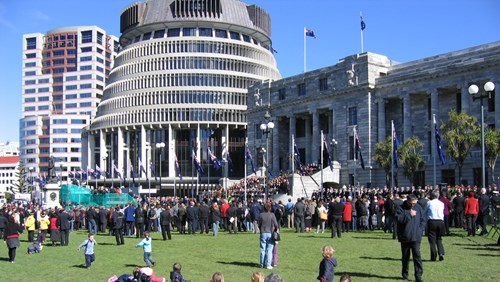
Labor’s $1B Mental Health Boost Helps Youth, Gaps Remain
The Labor government has announced it would invest A$1 billion in mental health if re-elected to provide more Australians – particularly young people – with “free, public mental health care”.
The package includes :
This is good news – but there are some important things that are left out.
Some 75% of severe mental health problems develop before a person turns 25. We know intervening early improves clinical outcomes as well as prospects for completing education and maintaining employment in the future.
So this focus on youth mental health is really welcome and needed. If we can execute it properly, it represents an investment not just in young people and their families, but will also see longer-term benefits for communities and the economy .
Australia’s continued investment in a network of youth mental health services, headspace, is unique and positive. That said, multiple reviews have found there are often issues finding enough staff to provide appropriate care for the young people accessing these services.
It’s crucial to ensure existing and new headspace centres have properly trained staff to deliver the required services. The new training places are welcome in this regard but will of course will take time to come on stream.
The youth specialist centres would be new, and could fill an important gap.
At present, we have federally funded Medicare services for mental health, such as GPs and psychologists. At the other end of the spectrum there are state-funded hospital inpatient and outpatient services for people with more severe problems.
What has been missing is much in the middle, in the way of community mental health services. The new specialist centres for young people with complex needs may go some way to filling this gap, but we need more detail about how they’ll operate.
This funding package has focused on new provisions for clinical and medical mental health care. While this is important, it neglects psychosocial care.
Psychosocial services help keep people in stable housing, in employment, at school and enjoying some quality of life. This is what really matters to most people.
The psychosocial workforce can be found in some of the non-government and charitable organisations providing mental health and community services. It includes people with a range of qualifications, with staff such as social workers, peer workers and others, who can help young people stay connected across these social determinants of health, while they receive treatment from clinical staff for their mental illness.
Of those needing help for their mental health, a large proportion of young people face multiple concerns, including drugs and alcohol, sexual health or other issues such as unstable housing. So rather than simply seeing one clinician, someone with an eating disorder, for example, may need a team including a psychologist, a GP, a social worker, a dietitian, a nurse and others.
It’s unclear whether the youth specialist centres would bring together multidisciplinary teams such as this, but it’s important they do, including professionals who can provide psychosocial care.
Psychosocial support services have traditionally been very poorly funded in Australia. One option could be to set up new Medicare mental health centres to be managed by community sector organisations already using team-based service delivery models.
Ultimately, while having more services is great, we need to think imaginatively and flexibly about who has the skills to best respond to young people’s needs. A heavy reliance on clinical and medical care, without psychosocial care, is a bit like trying to fight with one arm behind our back.
A national analysis found that in 2022-23, 335,800 people aged 12-64 with severe mental illness would benefit from 21.9 million hours of psychosocial support services. A further 311,500 people with moderate mental illness would benefit from 3.3 million hours.
Different groups face different levels of need and different barriers to accessing mental health care. So if we’re establishing new centres, we need to understand clearly things such as where the highest levels of psychological distress are, and what services will need to look like in areas where a high proportion of young people speak English as a second language.
What’s more, young women are more likely to seek mental health care than young men. We need to ask what’s making accessing services less appealing to young men and address these issues.
In a nutshell, we need to develop models of care tailored to local circumstances. This should involve working with local communities, rather than looking to impose centralised, one-size-fits-all solutions.
We also need to know how well new services will be linked to existing services, such as hospitals, GPs, and non-government organisations providing psychosocial care. If we don’t invest properly in coordination, these changes could risk perpetuating the fragmentation which often hampers our current mental health system.
Finally, we need a new level of accountability so we can tell whether what we’re doing is helping or not. We need regularly reported outcomes – such as hospital admissions among young people with mental illness – so we can understand system quality and performance, address any issues, and build our collective confidence that we’re meeting the needs of Australia’s young people.
Without this, we risk well-intentioned investments failing to deliver better support.
Sebastian Rosenberg does not work for, consult, own shares in or receive funding from any company or organisation that would benefit from this article, and has disclosed no relevant affiliations beyond their academic appointment.


